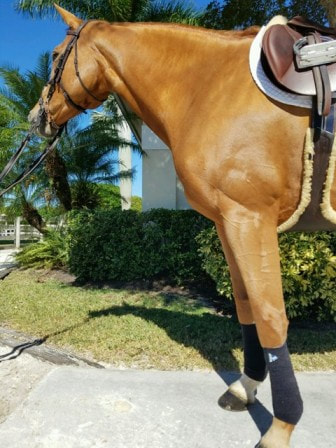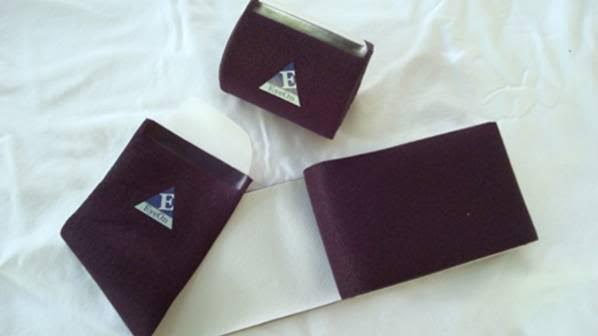
by Douglas Spatz, President, EyeOn Equine Care
I had a discussion the other evening with a family member about the pros and cons of icing and was told it’s used to treat horse’s legs and is recommended by so many professionals. My response was “Ice does not reduce swelling; the lymphatic system does.”
Actually, ice has been shown to reverse lymphatic drainage, causing backflow of fluid into the injured area and worsening edema . What is needed is anything that promotes circulation and movement of fluids that will help the lymphatic system do its job.
Icing damaged tissue does sometimes give temporary pain relief. However, it also delays healing, causes additional damage, increases swelling, and, perhaps most importantly, shuts off the nerve signals that alert you to which movements are harmful to your recovery process.
Since “good movement” is an essential part of the healing process (and bad movement is harmful), you need (and want!) the feedback more than you need (want) a short-term distraction that ultimately makes your problem worse, not better.
The natural inflammatory response is the initial process to the repair and remodeling of tissue, inflammation, repair and remodel. In a healthy healing process, a proliferative phase consisting of a mixture of inflammatory cells and fibroblasts naturally follows the inflammatory phase .
Researchers headed by Lan Zhou, MD, PhD, at the Cleveland Clinic, found that in response to acute muscle injury, inflammatory cells within the damaged muscle conduct phagocytosis, contribute to accumulation of intramuscular macrophages, and produce a high-level of Insulin-like growth factor 1, (IGF-1) which is required for muscle regeneration , IGF-1 is a primary mediator of the effects of growth hormone and a stimulator of cell growth and proliferation, and a potent inhibitor of programmed cell death.
Similarly, in 2010, Cottrell and O’Conner stated “overwhelmingly, NSAIDs inhibit or delay fracture healing ”. And you want to stop this critical process of healing by applying ice, because inflammation is “bad”?
The concept that ice facilitates healing became conventional wisdom, which is understandable because from what we could see it was working. However, that wisdom is wrong. I was then told, “We need to ice, because we need to get the swelling out and all the professionals have been doing this for a long time.” Really?
Do you believe ice facilitates the movement of fluid out of the injured area? I don’t think so. The lymphatic system is responsible for the removal of swelling and as the Textbook of Medical Physiology states: “The lymphatic system is a ‘scavenger’ system that removes excess fluid, protein molecules, debris, and other matter from the tissue spaces.
When fluid enters the terminal lymphatic capillaries, any motion in the tissues that intermittently compresses the lymphatic capillaries propels the lymph forward through the lymphatic system, eventually emptying the lymph back into the circulation.” Lymphatic drainage is facilitated by contraction of surrounding muscle and changes in compressive forces that push the fluid back to the cardiovascular system.
Ice actually reverses lymphatic drainage and pushes fluid back to interstitial space! There was a study published in 1986 that found when ice is applied to a body part for a prolonged period of time; lymphatic vessels begin to dramatically increase permeability.
As lymphatic permeability increases fluid will pour from the lymphatics into the injured area, increasing the amount of local swelling . Ice can increase swelling and retard debris removal! Ice essentially stops the free flow of blood and fluids; it causes the contraction of local blood vessels and soft tissue. This may inhibit the restoration of normal circulation, which is critical for healing.
Extensive use of ice is believed to cause an arthritic type of pain down the line that is worse with weather changes (especially cold and damp) and is difficult to treat. Ice is considered a major culprit in joint injuries that don’t heal properly.
If your primary goal is to resume intense training or racing immediately, then ice mighty help you do these things. If however, your primary goal is to speed healing, restore full function, and maintain the long-term health of that injured tissue then you need to skip the ice.
This doesn’t mean we should consider using NSAIDs such as bute and Banamine to reduce pain and inflammation either. When your horse is injured, the damaged tissue releases many different types of chemicals into the surrounding tissue and blood stream, some of which cause inflammation while others attract white blood cells to fight infection.
One of the chemicals released at an injury site is called prostaglandin. There are a variety of types to perform a wide range of functions such as cause tissue swelling, inflammation and pain, etc. Some prostaglandins are needed for day-to-day organ function, maintenance and some for reproductive purposes.
Without going into detail, NSAIDs inhibit enzymes called cyclooxygenases the body needs to make prostaglandins. If your horse isn’t making as many prostaglandins, then pain, fever and inflammation are reduced. Always consult your veterinarian before administering any NSAIDs.
The question is what can be used to reduce pain, swelling and inflammation without inhibiting the lymphatic system process if we decide not to us NSAIDs or ice? The answer is one that has been used through the ages but until recently might not have been as readably available or possess the traits necessary to offer enough safety, far infrared.
Far infrared itself is not dangerous but the methods used to promote far infrared healing need to be taken into account. If using a material that reflects heat and far infrared one must limit the use to ensure heat doesn’t build up so much that cell survivability is reduced.
Far infrared products made of synthetic fibers that reflect heat and can be irritating to the touch should have a limited period of use and extreme care should be taken when exercising a horse while using such products. Your best options are breathable products that don’t contain any heat reflecting and trapping ceramic material.

Infrared is known as the heat realm of the electromagnetic spectrum. Its wavelength is longer than visible light but shorter than microwaves, the next realm on the electromagnetic spectrum.
Infrared light/radiation has varied wavelengths with the shortest of the infrared being the “coolest” or emitting little discernible heat, although electromagnetic waves of any frequency will heat surfaces, which absorb it. Infrared radiation is defined by water absorption and is often subdivided into:
- NIR – near infrared (0.75-1.4m) well suited for fiber optic communication
- SWIR short wavelength infrared (1.4-3m) increased water absorption
- MWIR mid wavelength infrared (3-8 m) objects at room temperature will emit radiation at this length.
- LWIR long wavelength infrared (8-15m) military & industrial applications
- FIR far infrared (15-1,000m) soft tissue resonates at this length
Far infrared tests conducted on animals and people have shown the following effects:
- Infrared radiation penetrates deeply, up to 2” – easily passes through the dermal layers.
- Increases blood flow – bringing oxygen and nutrients to cells facilitating oxygen exchange rate while preventing thrombus formation. Particularly beneficial to soft tissue injuries.
- Musculoskeletal Improvements with Infrared heat – of particular relief to those with rheumatoid arthritis.
- Reduce swelling and inflammation by improving lymphatic flow
- Relief of muscle spasm
- Serves as a natural anti-toxin
Our tissues normally produce infrared energy for warmth and tissue repair. Tissue production of infrared energy is associated with a variety of healing responses. The Far-infrared travels the path of fresh water between the cells thus correcting the water molecules bond angle to a perfect hexagonal shape that then collects a total of 6 water molecules to form a collective microtubule of water.
The microtubule then creates a fiber optic response that aligns all the molecules to respond to the correct mechanisms of the blueprint of the DNA. Once far-infrared is within the body at its total capacity, it is repealed. This occurs in all living forms of life and in any material that has moisture or a water molecule within its pores.
The US National Library of Medicine, National Institutes of Health lists the benefits of far infrared, which include the following:
- Improved cell viability and prevented lactate dehydrogenase release under hydrogen peroxide (H2O2)-mediated oxidative stress and also elevated the intracellular levels of NO and calmodulin
- Could increase the generation of intracellular NO in breast cancer cells and inhibit growth of murine melanoma cells
- Increased calmodulin and NO production in RAW 264.7 macrophages
- Increase the viability of murine macrophages with different concentrations of H2O2
- FIR significantly inhibited intracellular peroxide levels and lipopolysaccharide (LPS)-induced peroxide production by macrophages
- Blocked ROS-mediated cytotoxicity (shown by measurements of cytochrome c and the ratio of NADP+/NADPH)
While it may be difficult to break old habits one only needs to try a non-ceramic, far infrared product on their own injuries, aches and pains to better understand the effects and provide a better idea how well they will work on your horses and other animals.
Find out more about Therapeutic Products and other resources in our Therapy Section.

































